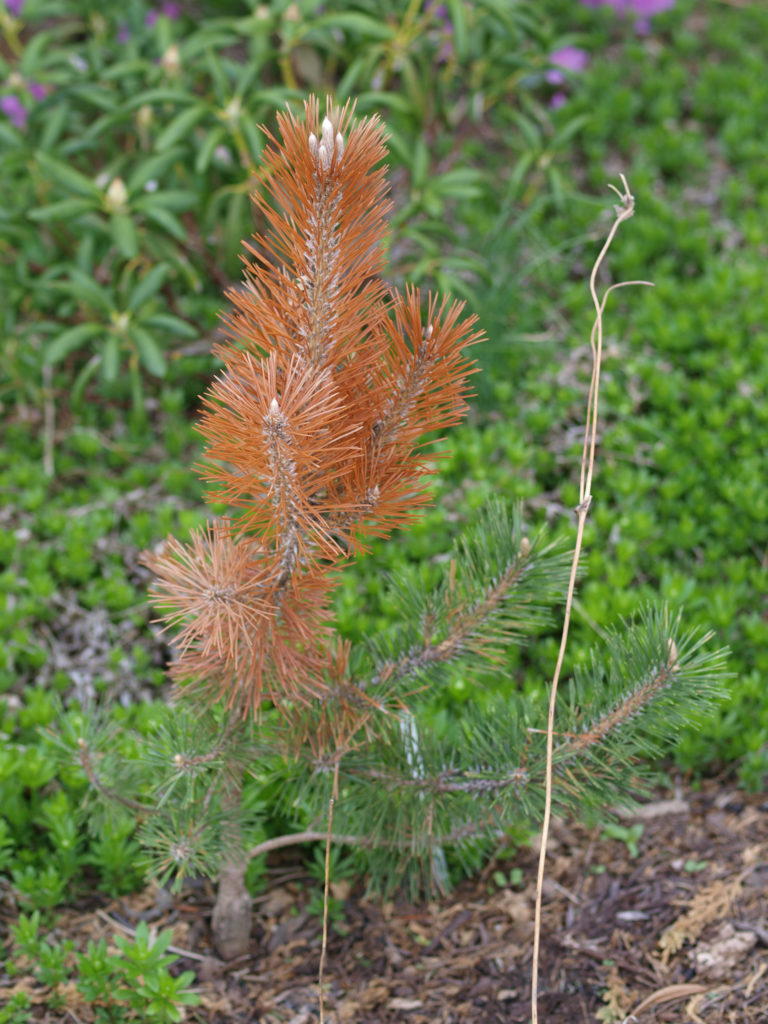During the winter season, trees must endure a slew of unique challenges, many of which are influenced by the frigid climate, and harsh, dry weather. One of the more common is a disorder called winter desiccation. The following is an overview of winter desiccation, and how it impacts trees.
What Is Winter Desiccation?
Winter desiccation, also referred to as winter drought, winter drying, or winter kill, is a foliage disorder that commonly afflicts evergreens. Winter desiccation occurs when plants lose more water than they are able to absorb. This is generally due to the soil being completely frozen, or too cold for water to be properly absorbed through the tree’s roots. When soil freezes or soil moisture is low due to drought or dry conditions, evergreens are unable to replenish the moisture they lose through transpiration. This results in the death and desiccation of foliage, and in more severe instances, developing buds.
Effects of Winter Desiccation:
The effects of winter desiccation typically become evident in the spring, as warmer temperatures prevail. As afflicted evergreens resume growth, the affected foliage turns a yellow or reddish-brown color. On narrow-leaved species, discoloration occurs on the tips. On broad-leaved species, discoloration occurs on the tips and along the margins of the leaves. If an evergreen’s buds have been impacted, dieback in the tree’s twigs and branches may occur.
Winter desiccation injury is often directional, forming on one side of the tree. Damage tends to most severe on the side of the tree exposed to wind. Directional patterning can also be influenced by solar radiation reflected from hard surfaces such as street pavement, rock mulch, or metal siding. Certain factors predispose evergreen trees to winter desiccation. These include improper mulching, poorly developed root systems, girdling roots, root injury, and stress resulting from insects or diseases.
Prevention & Management:
Healthy trees are more likely to sustain themselves through the winter months. A combination of proper pruning, regular fertilization, and routine watering can help maintain a tree’s health and vigor. Routine watering is especially important, as it helps to keep trees well nourished, while also replenishing the moisture lost through transpiration. When watering trees, soil should be kept slightly moist at a depth of 18 inches for shrubs, and 18 to 24 inches for trees. Applying a ring of organic mulch around the base of a tree can prevent the soil from freezing and reduce soil moisture loss. Trees that suffer from drought, or inadequate watering at any time during the year will not be able to withstand dry winter conditions as well.
Evergreen trees that have experienced winter desiccation injury should have any dead branches or branch tips properly removed. Dead branches can attract insects and fungi that feed on dead tissue, creating additional stressors for the afflicted tree, and hastening its decline.
Trees with a small amount of needle loss may still have live buds within the damaged branch sections. These buds will bloom, and send out new growth, eventually filling in the damaged section. As such, afflicted trees should not be pruned until the new growth has emerged.
Windbreaks and anti-transpirants minimize the impact of wind on trees. Windbreaks can be personally constructed, or supplied naturally by neighboring trees and shrubs. They help to reduce moisture loss, and shield trees from battering winds. Anti-transpirants are compounds designed to reduce the loss of water vapor in trees. Anti-transpirant sprays such as Moisturin and Wilt Pruf can be applied to restrict transpirational moisture loss.
Photo courtesy of F.D. Richards


